Mango: King of Fruits Unparalleled Still in 2025
The mango, celebrated globally as the “King of Fruits,” earned this title due to its exceptional nutritional value, widespread cultivation in over 100 countries, and immense popularity among consumers. Mango (Mangifera indica) is a tropical stone fruit known for its juicy, golden-orange flesh and sweet-tart flavour. Here are some key points about mango:
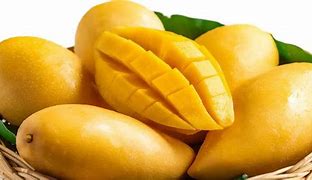
- Nutritional Profile:
- One cup (165 grams) of fresh mango provides:
- Calories: 99
- Protein: 1.4 grams
- Carbs: 24.7 grams
- Fat: 0.6 grams
- Fiber: 2.6 grams
- Sugar: 22.5 grams
- Vitamin C: 67% of the Daily Value (DV)
- Copper: 20% of the DV
- Folate: 18% of the DV
- Vitamin B6: 12% of the DV
- Vitamin A: 10% of the DV
- Vitamin E: 10% of the DV
- Vitamin K:…
- One cup (165 grams) of fresh mango provides:
Mango Varieties
Mangoes Come in a Delightful Array of Flavors, Textures, and Colors. Here are Some Popular Varieties:
- Alphonso (Hapus): Originating from the Ratnagiri region of India, Alphonso mangoes are renowned for their sweet, saffron-colored flesh and rich flavor1.

 Badami: Also known as the Alphonso of Karnataka, Badami mangoes have a similar taste to Alphonso but are smaller and grown in Karnataka.
Badami: Also known as the Alphonso of Karnataka, Badami mangoes have a similar taste to Alphonso but are smaller and grown in Karnataka.- Banganapalli: These large, yellow mangoes are popular in South India and have a sweet and slightly tangy flavour.
- Carabao Mango: A Philippine variety with juicy, golden flesh and a sweet taste.
- Chaunsa Mango: Originating from Pakistan, Chaunsa mangoes are sweet, aromatic, and fiber-free.
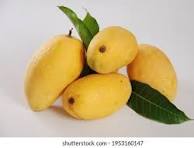
Chaunsa Mango -
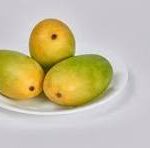
Dussehri Mango Dussehri Mango: A popular variety in North India, Dussehri mangoes are sweet, juicy, and have a hint of tartness.
- Francis Mango: Known for its yellow-green skin and sweet, tropical flavour.
- Haden: A variety grown in Florida, Haden mangoes have bright red skin and sweet flesh
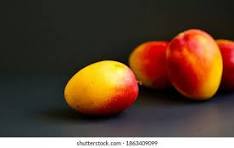
Haden Mango. - Irwin: These apple-flavored mangoes are also grown in Florida.
- Keitt: Green-skinned Keitt mangoes in the US have a mild, sweet taste.
- Kent: Dark green Kent mangoes are juicy and sweet, with a hint of tartness.
- Kesar: Saffron-colored Kesar mangoes are aromatic and flavorful.
- Tommy Atkins: Widely available in the US, Tommy Atkins mangoes have a fibrous texture and sweet taste1.
Pakistan is Renowned for Producing Exceptional Mango Varieties. Some Famous Pakistani Mangoes That Have Delighted Taste Buds Worldwide:
- Sindhri: Named after the Sindh province, Sindhri mangoes are prized for their exquisite taste, pale yellow skin, and fiberless flesh. They’re adorable with a hint of tartness, perfect for fresh consumption or mango-based desserts12.
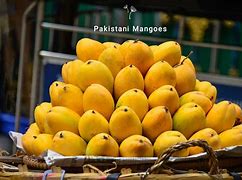
- Chaunsa: Fit for royalty, Chaunsa mangoes boast unparalleled sweetness, golden-yellow skin, and juicy, fiberless flesh. Their heavenly aroma makes them a global favourite, and they’re often exported to various countries12.
- Anwar Ratol: Hailing from the Ratol region (now part of Pakistan), these small to medium-sized mangoes have yellowish-green skin and buttery, fiberless flesh. Their sweet, aromatic flavour is unforgettable12.
- Langra: Known for its unique taste, Langra mangoes have a greenish-yellow skin and tender flesh. They’re beloved for their juicy texture and delightful flavor3.
- Dussheri: Another popular variety, Dussheri mangoes have a sweet and tangy taste, making them ideal for both eating fresh and used in culinary creations2.
These mangoes are a testament to Pakistan’s bountiful land and dedication to producing the finest fruit!
Pakistani mangoes like Sindhri, Chaunsa, and Anwar Ratol offer exceptional sweetness, aroma, and juiciness. Each variety has its fan base, and the choice ultimately depends on personal preference!
Pakistani Mangoes, Like Other Varieties, Offer Several Health Benefits.
Rich in Vitamins and Minerals: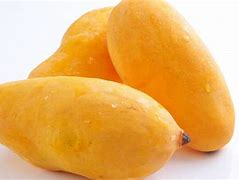
- Mangoes are packed with vitamins A, C, E, and K. Vitamin A supports vision and immune health, while vitamin C is an antioxidant.
- Minerals like potassium and magnesium contribute to heart health and muscle function.
- Digestive Health:
- Mangoes contain dietary fibre, aiding digestion and preventing constipation.
- Enzymes like amylase, which break down carbohydrates, are found in mangoes.
- Boosted Immunity:
- Vitamin C in mangoes strengthens the immune system.
- Beta-carotene (converted to vitamin A) also supports immune function.
- Skin Health:
- Vitamin A promotes healthy skin and may reduce signs of aging.
- Mangoes’ antioxidants protect against UV damage.
- Eye Health:
- Vitamin A supports eye health and prevents night blindness.
- Lutein and zeaxanthin in mangoes benefit vision.
- Anti-Inflammatory Properties:
- Mangoes contain compounds like quercetin and mangiferin, which have anti-inflammatory effects.
Remember to enjoy mangoes in moderation as part of a balanced diet. Some of these varieties may be more common in specific regions, so keep an eye out for them in international markets! 2
Here’s a fun fact: Mangoes are believed to have originated in South Asia over 4,000 years ago. They were considered a symbol of love and friendship in ancient Indian culture. Additionally, the mango tree is sacred in Hinduism, and it is said that Buddha himself meditated under the shade of a mango tree. So next time you enjoy a juicy mango, you’re partaking in a rich cultural and historical tradition!
Mangoes Hold a Special Place in the Traditions and Beliefs of Diverse Cultures Around the World. Here are Some Fascinating Aspects of their Cultural Significance:
India and Hinduism:
- The mango is India’s national fruit and is deeply ingrained in Indian culture. It appears in religion, art, poetry, and literature.
- In Hinduism, the perfectly ripe mango symbolizes attainment and potential perfection. Lord Ganesha is often depicted holding a mango.
- Mango blossoms are used in worship ceremonies dedicated to the goddess Saraswati12.
- Abundance and Prosperity:
- Mangoes represent abundance, fertility, and prosperity in various belief systems.
- Known as the “king of fruits,” mangoes hold spiritual significance in India and Southeast Asia. They are considered a symbol of divine blessings and good fortune3.
- Philippines and Bangladesh:
- The mango is also the national fruit of the Philippines and the national tree of Bangladesh.
- Its cultural importance extends beyond borders, connecting people through a shared appreciation for its sweetness and richness1.
So next time you enjoy a juicy mango, remember that you’re partaking in a tradition that spans centuries and continents! 45
Mango Enthusiasts Worldwide Celebrate the Deliciousness of this Tropical Fruit through Vibrant Festivals. Here are a Few Notable Ones:
- Manggahan Mango Festival (Guimaras Island, Philippines):
- Held on Guimaras Island, this festival celebrates the carabao mango, known for its sweetness.
- The traditions date back to 1993, marking Guimaras’ designation as an independent province.
- Manggahan festivities last around two weeks, featuring performances, mango tastings, and more1.
- International Mango Festival (Delhi, India):
- India’s capital hosts this colourful festival, showcasing thousands of mango varieties.
- Visitors enjoy gourmet tastings, cultural performances, and mango-themed competitions2.
- Dinamulag Mango Festival (Zambales, Philippines):
- Zambales celebrates mangoes with eating contests, parades, and cultural events.
- It’s a lively gathering where locals and tourists savor the fruit in various forms3.
- Fairchild Tropical Gardens Mango Festival (Miami, Florida, USA):
- Negril Mango Festival (Negril, Jamaica):
- Jamaica’s Negril region celebrates mangoes with live music, dance, and, of course, mango feasting.
So whether you’re in Asia, the Americas, or the Caribbean, there’s a mango festival waiting to delight your taste buds!
When Choosing the Best Mangoes at a Market, Consider These Tips:
- Colour: Look for vibrant colours, as they indicate ripeness. Mangoes should have shades specific to their variety1.
- Texture: Gently squeeze the mango. A ripe one should yield slightly under pressure1.
- Smell: Check the stem end for a sweet aroma; that’s a sign it’s ready to eat1.
Overripe mangoes may not be ideal for eating fresh, but they can be transformed into delightful dishes. Here are some creative recipes to make the most of those juicy, past-peak mangoes:
- Mango Cheese Roll:
- A simple and impressive dessert made with overripe mangoes. Roll slices of mango with cream cheese or any other cheese you like. It’s a sweet and tangy treat that looks Pinterest-worthy!
- Mango Bars:
- Nutritious and easy to make, these bars require just two ingredients: overripe mangoes and oats. They’ll impress your guests without complicating your life.
- Easy Mango Bread:
- Light, fluffy, and zingy, this bread features chunks of mango. Use whole-wheat or multi-grain bread, keep it slightly moist, and let the mango sit for a few minutes before spreading it on top.
- Mango Crumble Bars:
- Mix overripe mangoes with oats and a touch of coconut oil (or butter). These healthy bars are soft, flavorful, and perfect for snacking.
- Easy Mango Mousse:
- Create a light dessert by blending mangoes with other fruits like pears, plums, or apricots. Quick to prepare, this mousse is a delightful way to enjoy mangoes.
- Mango Coconut Cake:
- Surprise your family or guests with this quick and easy dessert. The combination of overripe mangoes and coconut is a winner!
Remember, overripe mangoes can still shine in the kitchen! Enjoy experimenting with these recipes.
Mango Chutney is a Delightful Condiment that Pairs Well with Various Dishes. Here are a Few Simple Recipes to Choose From:
- Tangy Mango Chutney:
- Ingredients:
- 6 cups peeled and diced mangoes (about 3 1/2 pounds)
- 1 cup finely chopped crystallized ginger (or 2 tablespoons minced fresh ginger)
- 1 cup white vinegar
- 1 cup white granulated sugar
- 1 teaspoon whole mustard seeds (or use grainy mustard)
- Pinch of red pepper flakes (adjust to taste)
- Instructions:
- Combine all ingredients in a saucepan.
- Simmer for about 1 hour until thickened.
- Serve with chicken, pork, or lamb1.
- Sweet and Spicy Mango Chutney:
- Ingredients:
- 4 pounds fresh mangoes (ripe but not too soft, peeled and cut into pieces)
- 1 teaspoon chile flakes
- 1 red onion (medium dice)
- 1 cup red bell pepper (small dice)
- 8 ounces of unsweetened pineapple juice
- 4 ounces cider vinegar
- 1/2 cup brown sugar
- 1 1/2 tablespoons curry powder
- Salt and white pepper to taste
- 1/2 cup golden raisins (or regular raisins)
- 1/2 cup toasted macadamia nuts (roughly chopped)
- Instructions:
- Combine mangoes, spices, onion, and peppers in a saucepan.
- Add sugar, vinegar, and pineapple juice.
- Simmer until tender and the sauce thickens.
- Let cool and refrigerate. Enjoy.
- Classic Mango Chutney:
- Ingredients:
- 6 firm but ripe mangoes (about 1.5 kg)
- 500 ml white wine vinegar
- 450 g granulated sugar
- Spices: cumin seeds, coriander seeds, cardamom pods, nigella seeds, cayenne pepper, turmeric, garlic, ginger, and red chilli
- Instructions:
- Combine all ingredients in a large saucepan.
- Bring to a boil, then simmer until tender and the sauce thickens.
- Cool, refrigerate, and enjoy.
- Ingredients:
- Ingredients:
- Ingredients:
The Best Time to Enjoy Mangoes for Maximum Benefits is During Their Peak Season, Which Varies by Region. Here are Some General Guidelines:
- Morning: Consuming mangoes in the morning provides a natural energy boost due to their natural sugars. They can kickstart your day with a burst of vitamins and antioxidants.
- Between Meals: Eating mangoes as a snack between meals helps prevent overeating during main meals. The fibre content keeps you full and satisfied.
- Post-Workout: Mangoes replenish glycogen stores and provide essential nutrients after exercise. Pair them with a protein source for a balanced recovery snack.
- Avoid Late Nights: Consuming mangoes late at night may lead to indigestion due to their high sugar content. It’s best to enjoy them earlier in the day.
Remember, moderation is key, and individual preferences play a role. Enjoy this delicious fruit whenever it fits your routine.
Mangoes Play Well With a Variety of Fruits in Smoothies. Here are Some Delicious Combinations:
- Perfect Mango Smoothie:
- Ingredients:
- 2 cups frozen mango
- 1 ripe banana
- ½ cup water
- ½ cup milk (dairy or non-dairy)
- Ice cubes
- Fresh lemon juice (to brighten flavours)
- Instructions:
- Blend mango, banana, water, and milk until smooth.
- Add ice cubes for a frothy texture.
- Finish with a squeeze of fresh lemon juice.
- Pour into glasses and enjoy! 1
- Mango Yogurt Smoothie:
- Ingredients:
- 1 ½ cups frozen mango chunks
- 1 ripe banana
- 1 cup Greek yogurt
- 1 cup almond milk
- Ice cubes
- Instructions:
- Blend mango, banana, yoghurt, and almond milk until creamy.
- Add ice cubes for thickness.
- Serve chilled! 2
- Tropical Mango Smoothie:
- Ingredients:
- 1 cup orange mango juice
- ½ cup vanilla yogurt
- 1 ripe banana
- 1 cup frozen mango cubes
- Instructions:
- Blend all ingredients until smooth.
- Pour into glasses and savour the tropical vibes! 3
- Ingredients:
- Ingredients:
- Ingredients:
Feel free to customize these recipes by adding mint, chia seeds, or a splash of coconut milk. Enjoy your mango-filled oasis!
- Pineapple and Mango:
- Tropical bliss! Pineapple adds tanginess to complement mango’s sweetness.
- Banana and Mango:
- Creamy and delightful. Banana enhances the texture and flavour.
- Coconut and Mango:
- A piña colada vibe! Coconut milk or shredded coconut pairs beautifully.
- Strawberry and Mango:
- Sweet meets tangy. Strawberries add colour and freshness.
- Papaya and Mango:
- Double tropical goodness. Papaya’s soft texture complements mango.
Feel free to mix and match based on your taste preferences!
If you enjoyed this article, please like and share it with your friends. Don’t forget to Share your personal experience/observations thoughts and valuable suggestions for the education /benefit of others. Do subscribe to remain onboard and get more great content!
Top 15 High Protein Vegan Recipes: No More Eating a Chicken a Day
